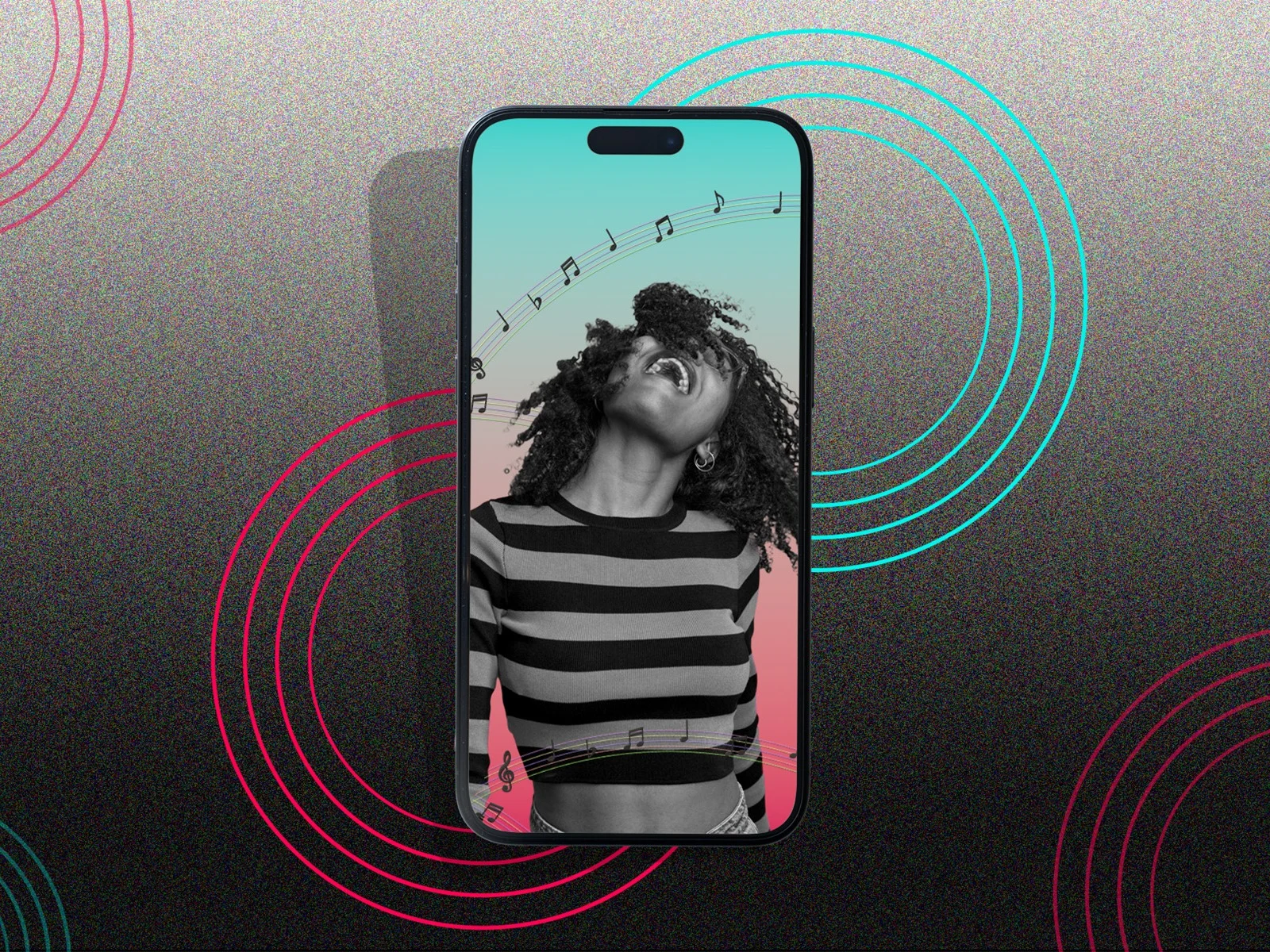Nearly a year before the US ban on was set to take effect, millions of choreographed dancers, lip-syncers pantomiming to pop songs, and sports montages set to dramatic music suddenly went silent on the social media app on Feb. 1, 2024.
When Universal Music Group (UMG), the world’s largest record label by market share, pulled its music from TikTok due to a licensing squabble with the social platform, videos featuring songs by Billie Eilish, Drake, Taylor Swift, and other artists could be seen but not heard on the app. UMG and TikTok struck a new licensing deal on May 1, ending the soundless feud to the delight of fans and artists.
Still, the three months of digital silence highlighted “the indispensable role of sound in content creation and the potential consequences of such disputes on the creative community,” says Harvard Business School Professor Elie Ofek. He cowrote the working paper “The Value of Silence: The Effect of UMG’s Licensing Dispute with TikTok on Music Demand” with HBS doctoral candidate Mengjie (Magie) Cheng and University of Washington Professor Hema Yoganarasimhan.
It does seem like TikTok, at least going into this, felt like they had the power.
The research comes as the US issues a broader ban on TikTok, unless it sells its US operations to an American company, amid concerns that China-based parent company ByteDance might collect user data that could pose a national security risk. TikTok went dark for a day in January, then returned after President Donald Trump overruled a law passed by Congress and upheld by the US Supreme Court, delaying enforcement of the ban.
As TikTok users and content creators wait to see how the ban plays out, the UMG struggle provides insight into the value of creative work on social media platforms. The researchers found that UMG was indeed getting a poor deal under the previous licensing agreement, losing an estimated $788 million in streaming revenue.
The research team was also able to track exactly what happens when a song suddenly disappears from the platform, allowing them to study a tricky question: How much does music benefit TikTok—and how much does TikTok benefit the music industry?
Putting a price on music
UMG argued that TikTok’s compensation structure was “unfair,” claiming that TikTok only led to about 1 percent of UMG’s total revenue in 2023. Every time a TikTok user created a video with a UMG track, TikTok paid a royalty only for the use of that song in that specific video, explains Ofek, the Malcolm P. McNair Professor of Marketing.
“But then, when millions of people watch the video, that's it. There's no more payment,” he says.
In other words, a video featuring Swift’s “Cruel Summer” that got 20 views earned UMG and its artists the same amount of money as a video featuring the same song with 20 million views.
In this age of digital, there can be substantial cross-demand effects between different platforms.
TikTok maintained that the app was a boon to artist discovery and promotion. In theory, the video with 20 million views may have inspired other videos and promoted the song further, Ofek points out.
“The counter-argument that TikTok brought to the table was, ‘You should thank us. We're a platform for allowing your artists to get discovered,’” Ofek says. “It does seem like TikTok, at least going into this, felt like they had the power.”
While details of the new agreement weren’t publicly released, The New York Times reported in May that artists and songwriters would be paid significantly more under the new deal, and Billboard noted that TikTok is also giving the label other perks, including advertising credits and e-commerce tools.
Muting music on TikTok
More than 34 million videos are posted on TikTok daily, and 85 percent of them feature music. Musical artists and their representatives choose whether or not to offer their songs to TikTok for app users to include in their videos, and many allow only subsets of their catalogs for TikTokers to employ.
In an economic impact analysis, the researchers observed that when popular songs once available on TikTok were removed during the dispute period, their daily streams on other platforms like Spotify and YouTube experienced a 2-3 percent increase. This suggests that TikTok does “cannibalize the consumption of popular songs” that would otherwise be streamed on other platforms—creating “a substitution effect”—the team says.
On the other hand, when UMG removed its music, artists with partial catalog presence on TikTok saw a 1–3 percent decrease in streams on other platforms for their songs that weren’t previously available on TikTok. This represented a “complementary effect,” suggesting TikTok serves an important role in promoting new music discovery, the team says.
But the money lost from hearing that Drake track on TikTok, rather than seeking it out on Spotify, for example, far outpaced the calculable financial effects of new-artist discovery, the researchers found. Rather than pay only per video use as TikTok did, Spotify and YouTube were paying UMG about $0.003 and $0.001 per listen, respectively, creating a much larger revenue stream.
In fact, the authors estimated that UMG was potentially losing $788 million annually from Spotify and YouTube due to listenership on TikTok annually—and that calculation didn’t include plays on other popular music platforms, such as Apple Music and Soundcloud.
Lessons from the standoff
While the battle between UMG and TikTok is internet history, the researchers say others in the media and entertainment industries should remember two lessons as they negotiate new deals.
Social promotion and fair royalties can coexist
Cheng suggests that creators of other media, such as film and television, look beyond the value of social media for advertising and see how they might be able to structure contracts to allow clips of their creative work on social platforms with permission while collecting fair royalties.
“They have copyright issues, but at the same time, they also want to advertise their creative work,” she says. “So how can they structure this royalty contract to account for both the social media’s promotional value and also how much they should get paid for use of their content on the platform.”
Content has value, regardless of the platform
Most of all, Ofek says, it’s important for creators and content rights holders to understand their value, especially as their work transcends different platforms.
“In this age of digital, there can be substantial cross-demand effects between different platforms,” he says. “You might think: This is a streaming service; this is social media; they're disconnected. But, for most types of creative content, you want to be aware of potential cross-demand effects. Otherwise, you could be losing out.”
Image by Ariana Cohen-Halberstam for HBSWK


